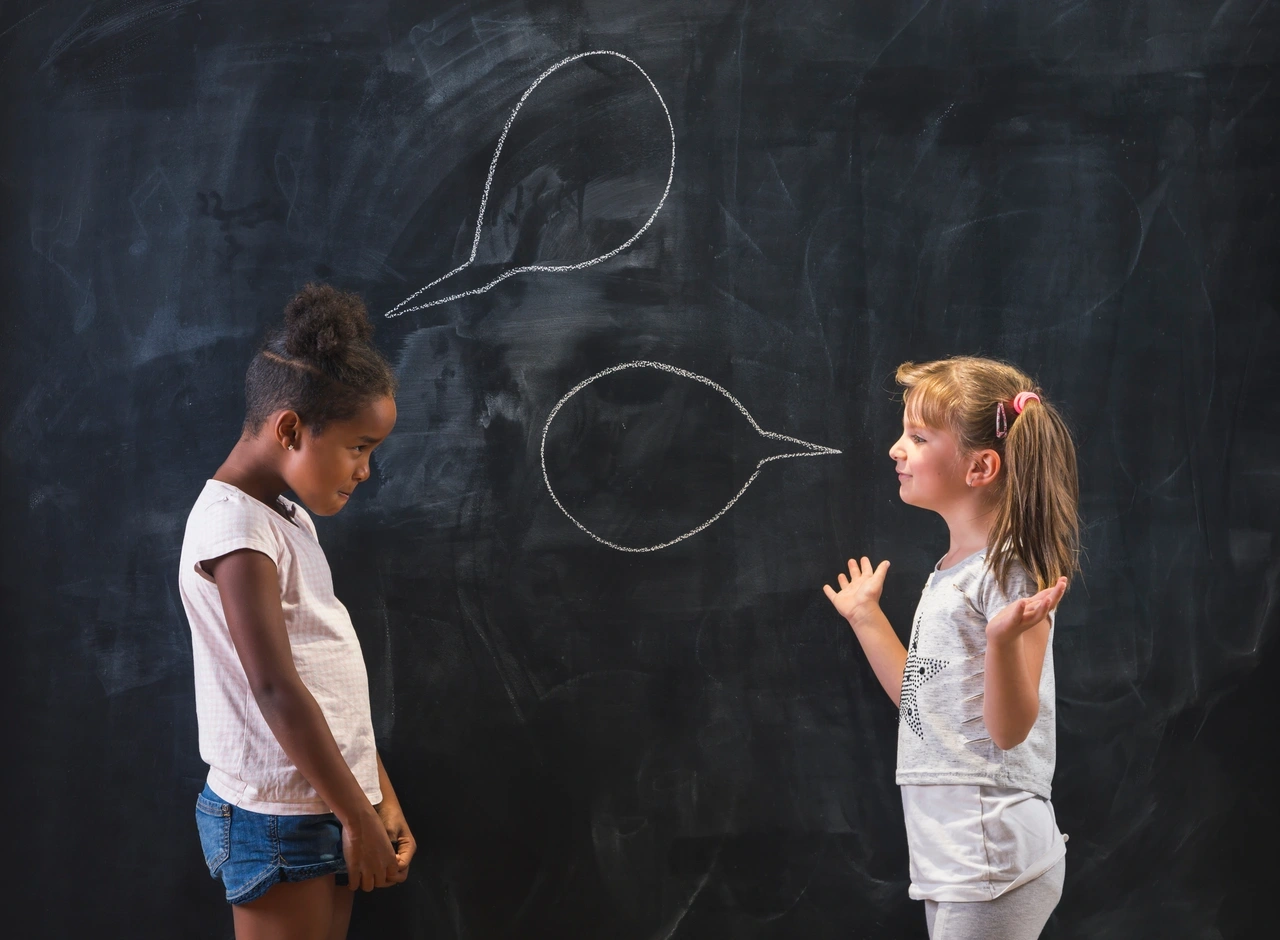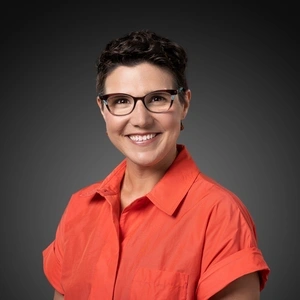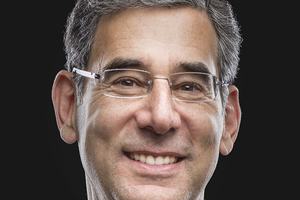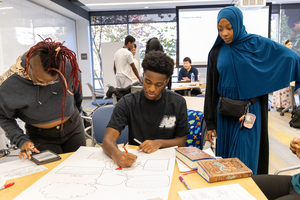Faculty Expert

Educators can facilitate constructive dialogue by empowering students to create community norms and choosing responsive strategies when classroom conversations are contentious.
Sarah Kavanagh, Penn GSE associate professor and director of the Collaboratory for Teaching and Teacher Education, shares these insights with teachers everywhere to help explore education discourse.
Set rules of engagement
Have discussions about discussion and engage students in creating rules of engagement at the start of the school year — or as soon as possible.
“Talking about discussions helps students understand everyone else is human and nervous about sharing ideas, too,” she explains.
Kavanagh says students are part of a community, so involve them in deciding what language is acceptable and how conversations stop, pause, and restart when things get sticky.
She calls this “norming for discussion” and suggests compiling a list of principles for discussion. Ask students what helps them speak up and what’s scary about engaging. Ask students what makes them feel heard and what they find intimidating. A class might develop principles like, “You don’t need to have it all figured out to share a thought,” “You’re not the only one who’s nervous to share,” and “If discussions get hard, it’s okay to say that out loud.”
Post the norms on the wall and remind students they established the ground rules.
Choose a response strategy
While teachers don’t have a crystal ball to foretell challenging moments, they can think in advance about how they might react in the face of a challenge.
Kavanagh suggests having a few options in your back pocket, including these three:
- Shutting down comments that others might find hurtful.
- Offering an alternative viewpoint.
- Opening negotiations.
She acknowledges that each has potential advantages and pitfalls, and teachers must use their best judgment.
Option 1: Shut it down
Teachers can direct students to stop speaking if they say something that others might find hurtful or overly provocative. While there are certainly times when shutting a student down is the best move, an abrupt ending can have consequences, Kavanagh notes. A student may stop talking, but it’s less likely that a directive will change their underlying beliefs. Policing speech could even backfire.
“Students may even double down if they feel shamed and develop a deeper hold on the belief. It could start coming out more when you’re not present,” Kavanagh says.
She adds that when teachers shut down conversations, they also give up the opportunity to moderate and mediate when learning can happen.
Option 2: Offer an alternative viewpoint
When a student makes a comment that someone else might find hurtful, Kavanagh says an educator can suggest another perspective and shift the conversation.
For instance, if a student comments negatively about Shakespeare expressing affection for men, the teacher could offer an alternative perspective rather than admonishing the student for their negativity.
“You could say, ‘I think it’s cool that scholars think Shakespeare may have loved a man at some point in his life. We look up to him to define love, and it turns out he may have loved in many different ways,’” Kavanagh says.
In that case, the teacher doesn’t claim the correct response but doesn’t shame the student for their perspective. That could promote open dialogue and learning.
Option 3: Open negotiation
When a classroom discussion elicits significant reactions, Kavanagh suggests a teacher might ask students to pause and start writing. What upset them? How did they respond? What do they want to discuss further?
After students document the moment, ask them to share ideas and restart the discussion respectfully.
“Learning is much more complicated than being trained,” she says.
Pro tip: Kavanagh cautions that this approach only suits some topics and may work best for experienced educators.
Collaborate with colleagues
Educators need support developing and testing strategies, so Kavanagh recommends workshopping techniques with colleagues and teacher educators.
“When educators have opportunities to work together, prepare, and try things out, they get smarter and better,” she adds.

Dr. Sarah Kavanagh is a leading expert in teacher education, instructional coaching, and professional development. A former middle and high school teacher, she is at the forefront of efforts to reimagine infrastructures for teacher professional learning across the career span.
Subscribe to the Educator's Playbook
Get the latest release of the Educator's Playbook delivered straight to your inbox.
Media Inquiries
Penn GSE Communications is here to help reporters connect with the education experts they need.









